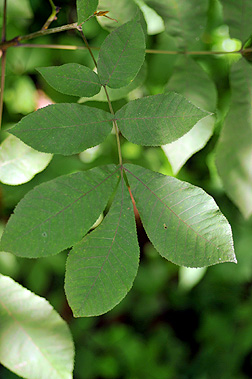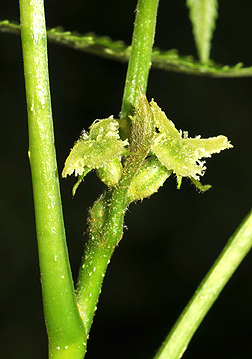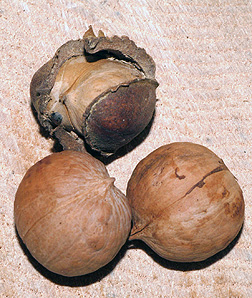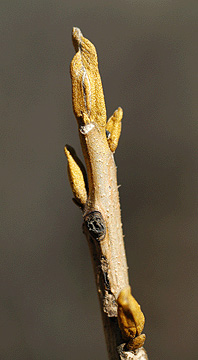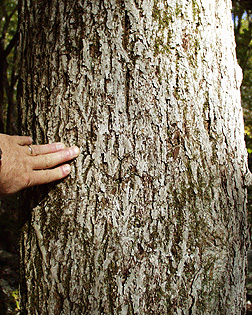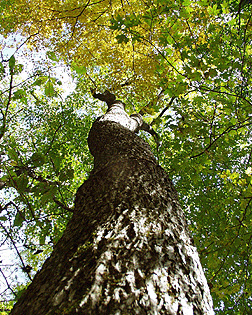 Virginia Tech Dendrology
Virginia Tech Dendrology
bitternut hickory Juglandaceae Carya
cordiformis (Wangenh.) K. Koch
![]()
![]()
![]() symbol: CACO15
symbol: CACO15
Leaf: Alternate, pinnately compound, 7 to 10 inches long, with 7 to 11 leaflets, leaflets are lanceolate and serrate, rachis is slender and pubescent, dark green above, paler below.
Flower: Species is monoecious; males are yellow-green, drooping catkins with 3 hanging from one stalk, 3 to 4 inches long; females are short, 4-angled, on a terminal spike, appearing in spring.
Fruit: Nearly globose but slightly flattened, 1 inch long, partially dehiscent from the middle to the sharp-pointed tip; husk is thin and 4-winged above the middle, often dusty-yellow looking; maturing in fall.
Twig: Moderately stout to slender (when compared to other hickories), leaf scars are 3-lobed; terminal bud is valvate, 4-angled and sulfur-yellow to brown in color.
Bark: Thin, tight and hard; initially smooth and silvery gray, much later gray with shallow furrows and interlacing ridges.
Form: A medium to large tree capable of reaching over 100 feet tall with an open, rounded top.
Looks like: water hickory
- pecan
Additional Range Information: Carya cordiformis is native to North America. Range may be expanded by planting. Download the full-size PDF map.
More Information: Fall Color - Wood
External Links: USDAFS Silvics of North America - USDAFS FEIS Silvics - USDA Plants Database - USDAFS Forest Products Lab
All material 2025 Virginia Tech Dept. of Forest Resources and Environmental Conservation; Photos and text by: John Seiler, Edward Jensen, Alex Niemiera, and John Peterson; Silvics reprinted from Ag Handbook 654; range map source information
